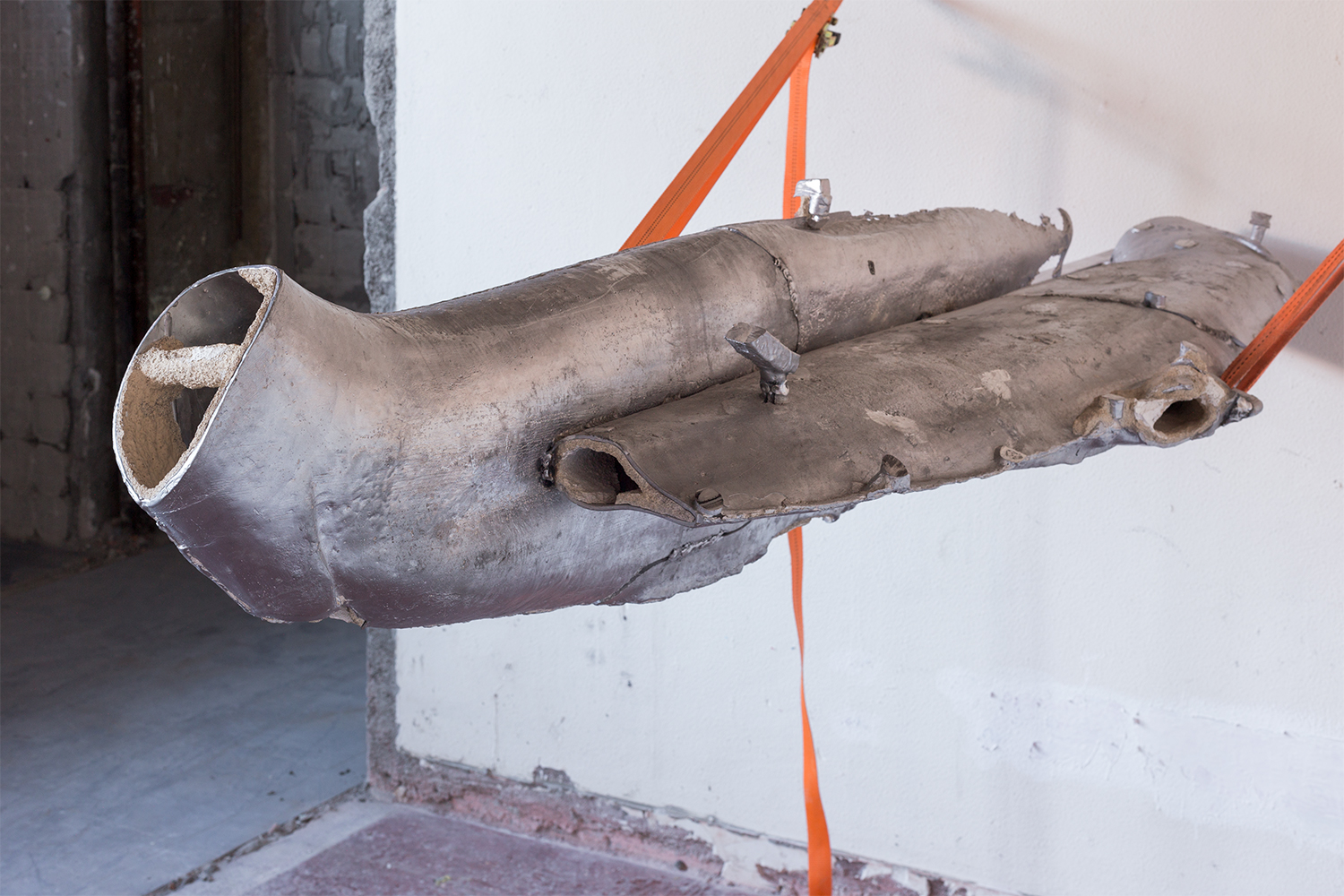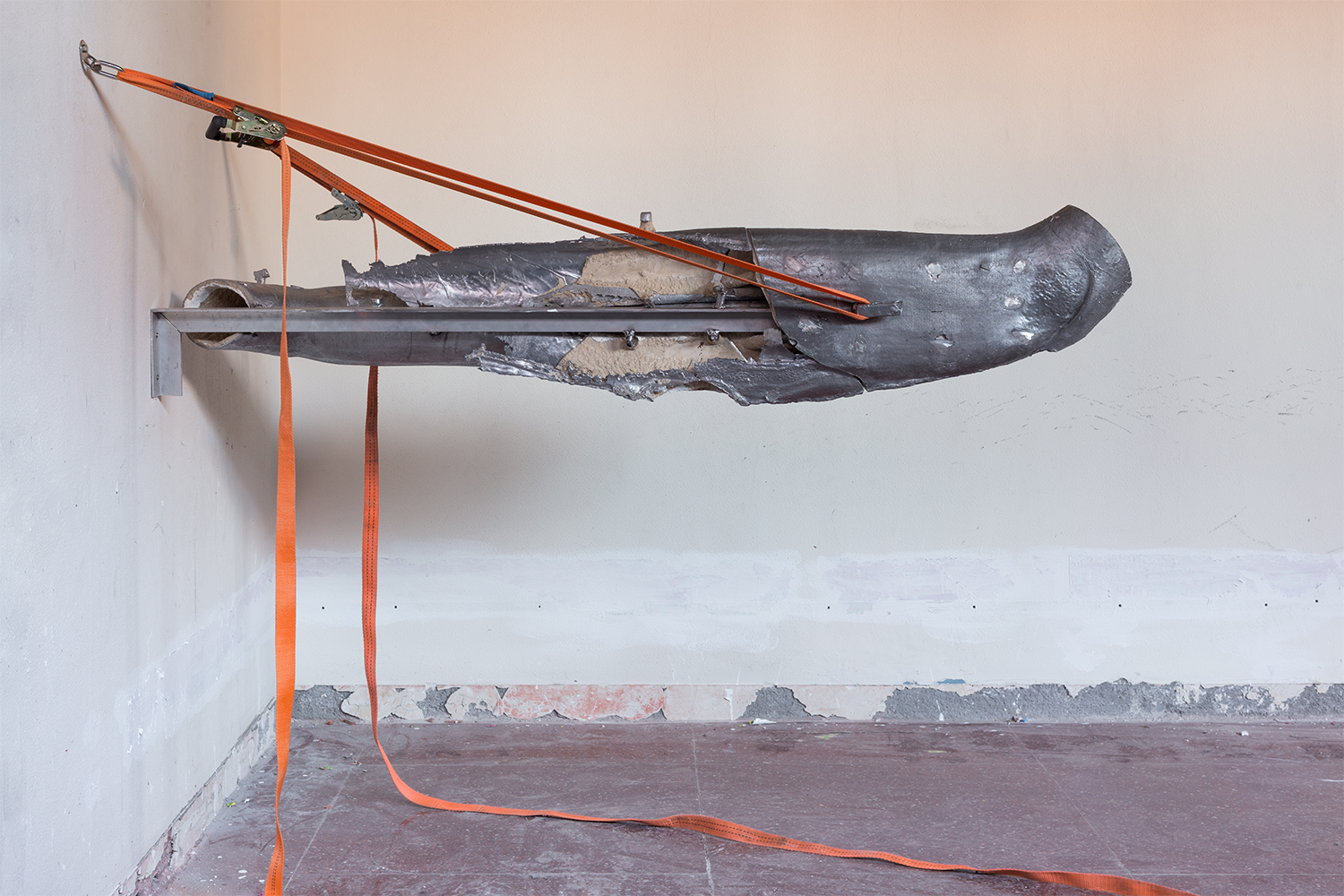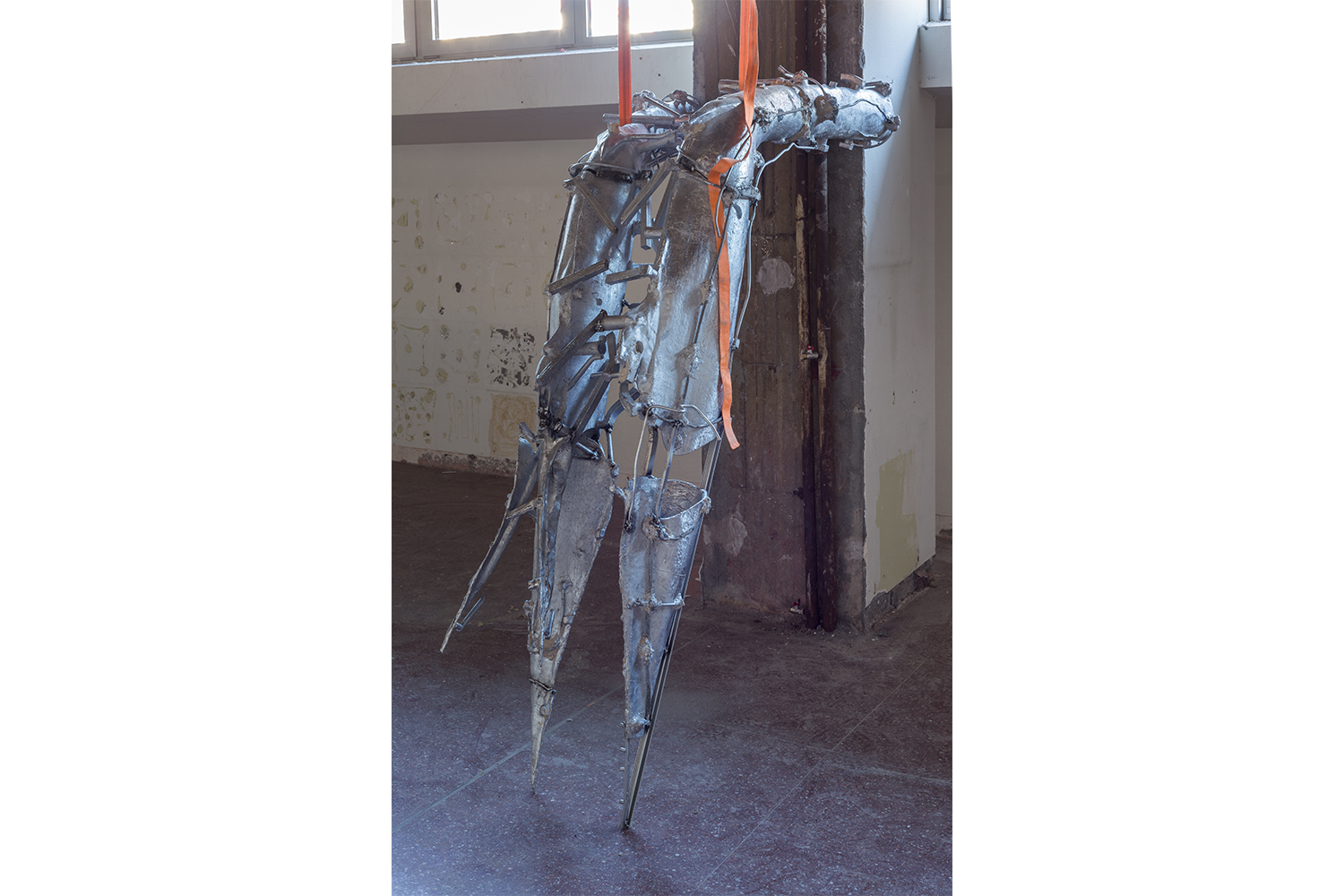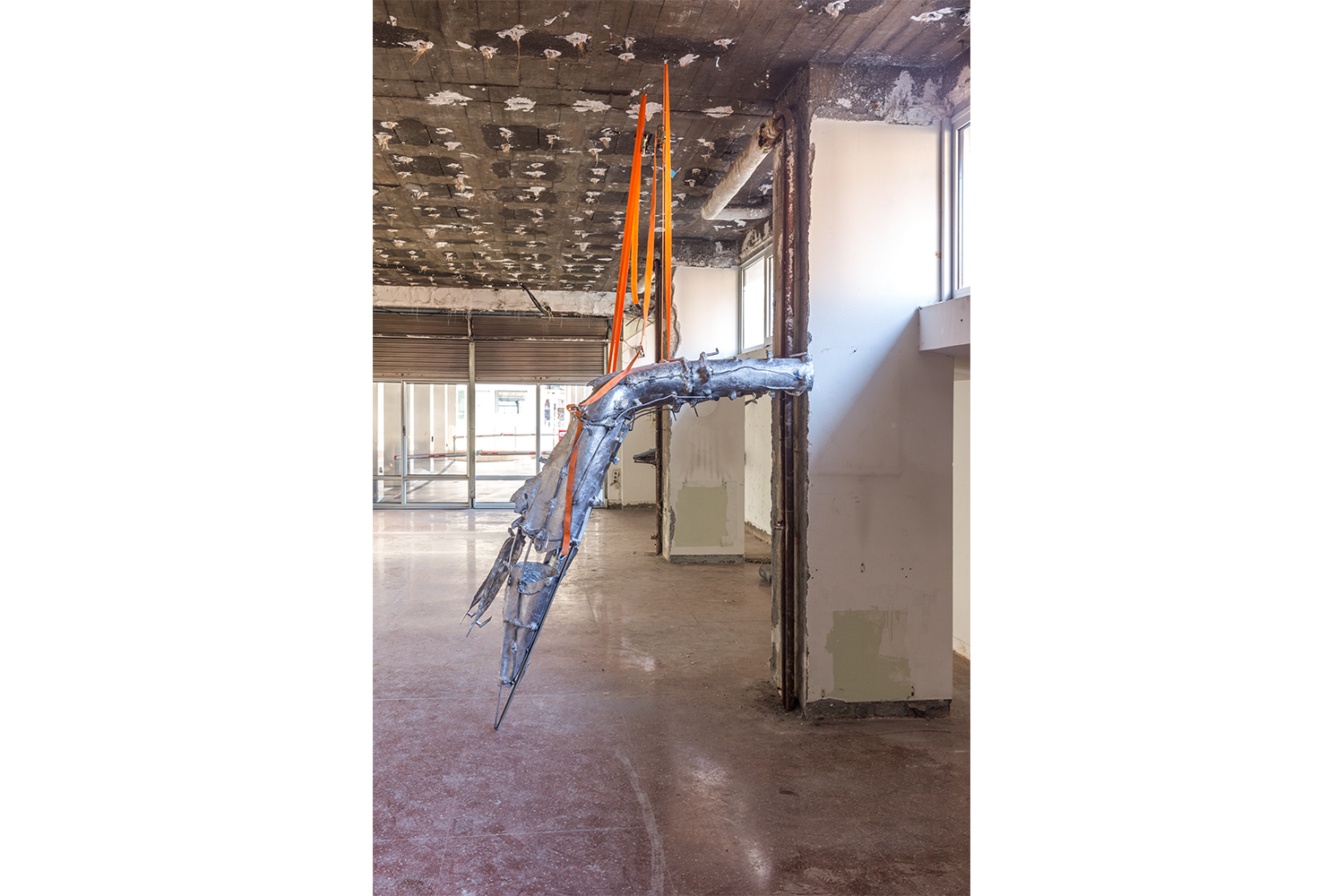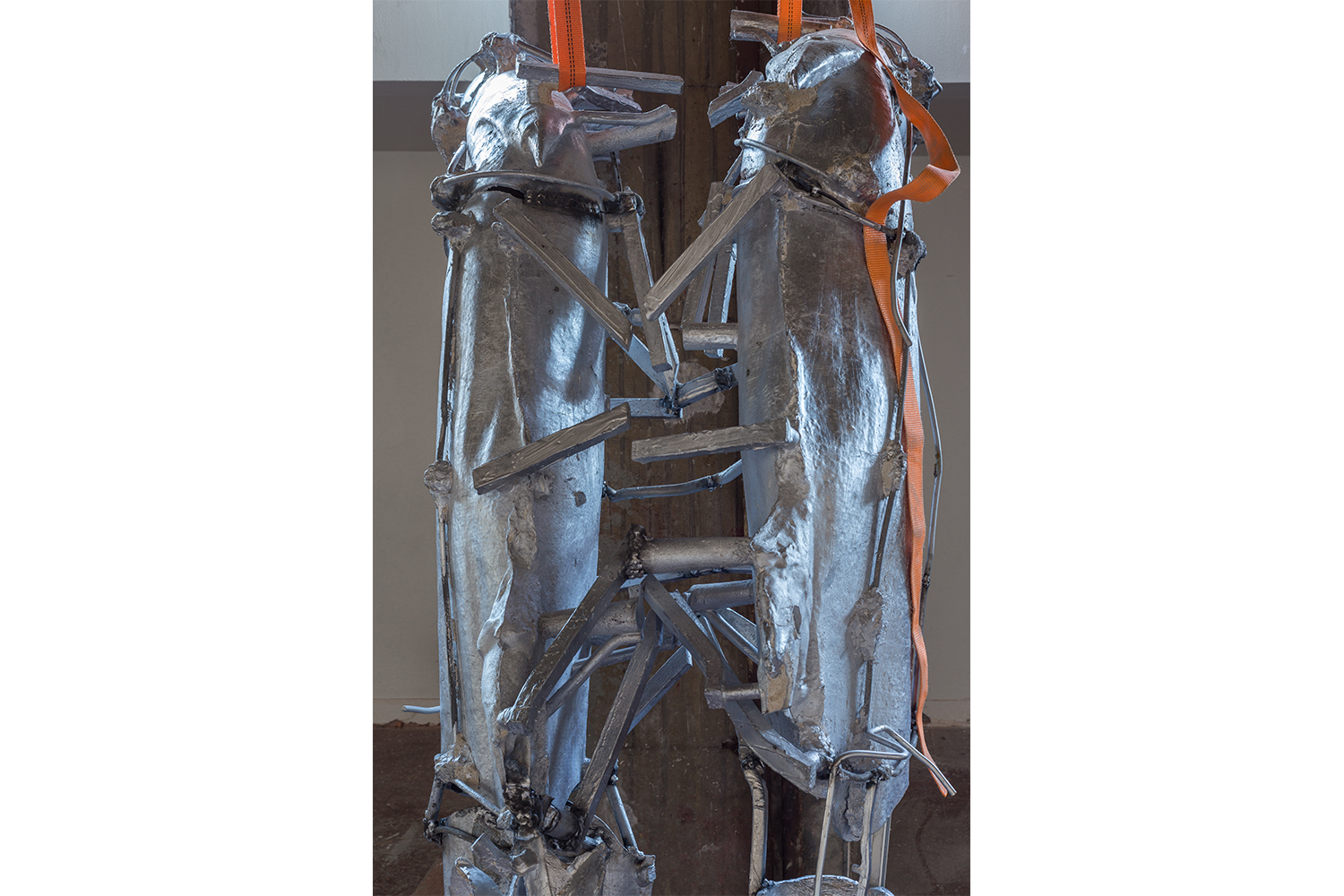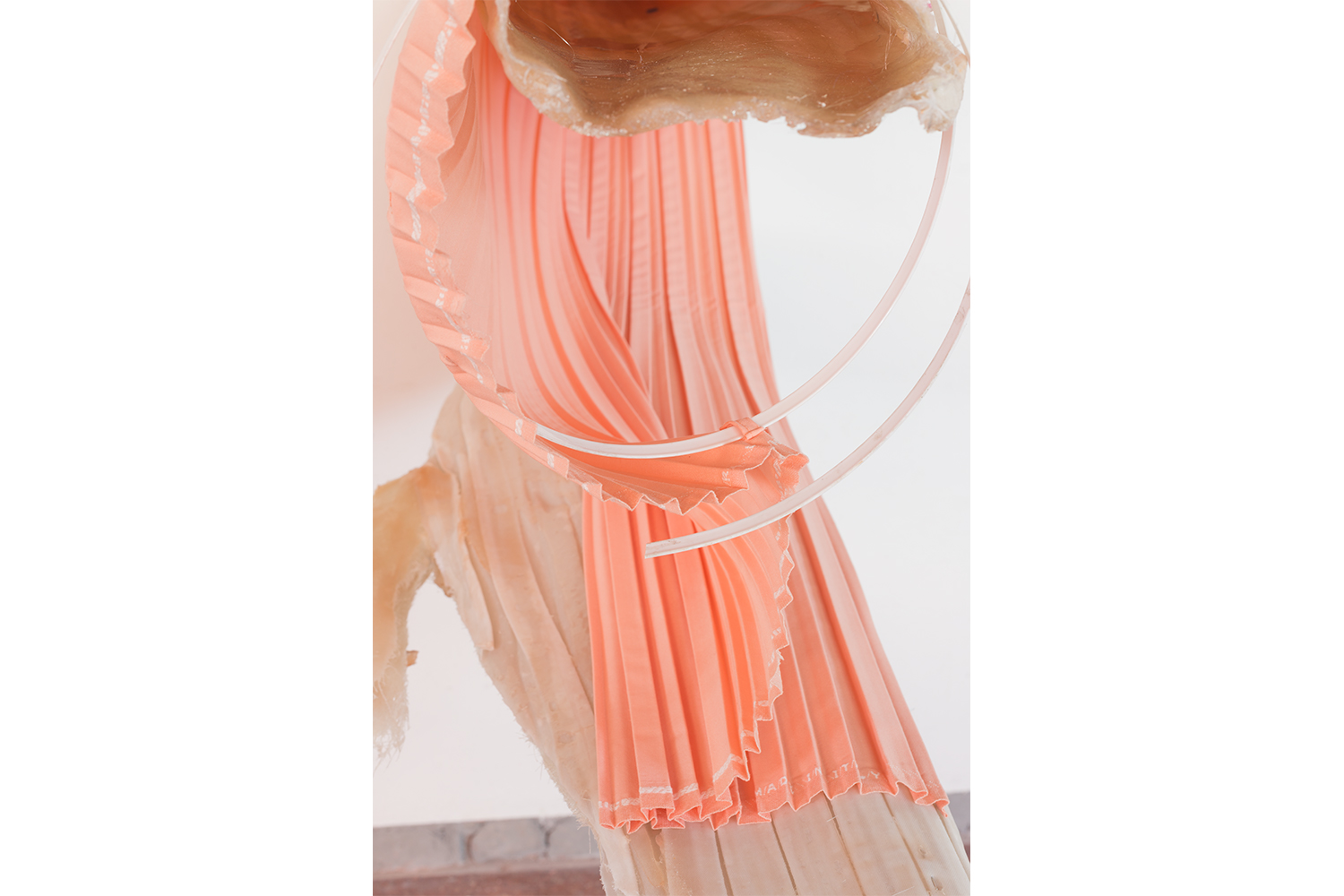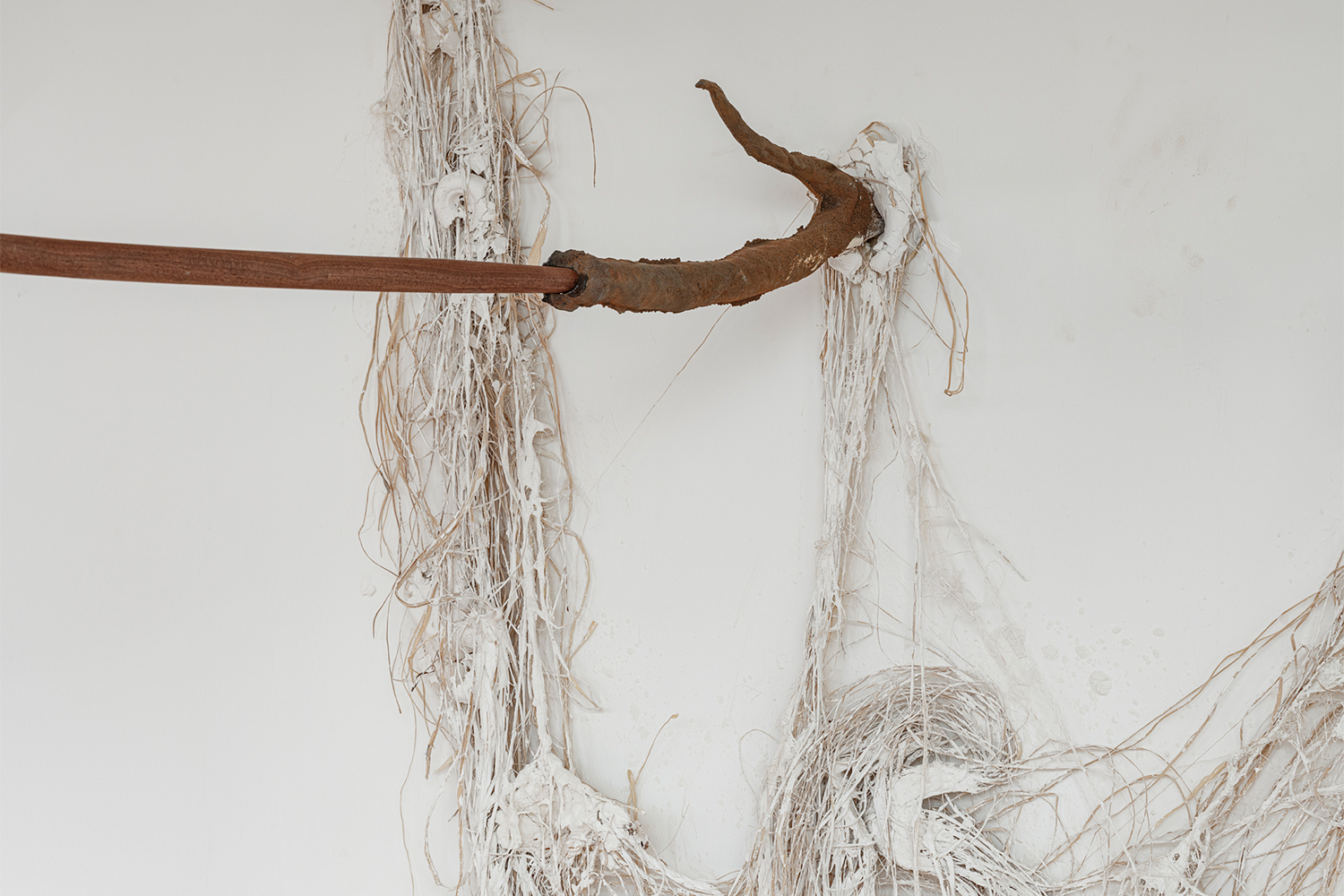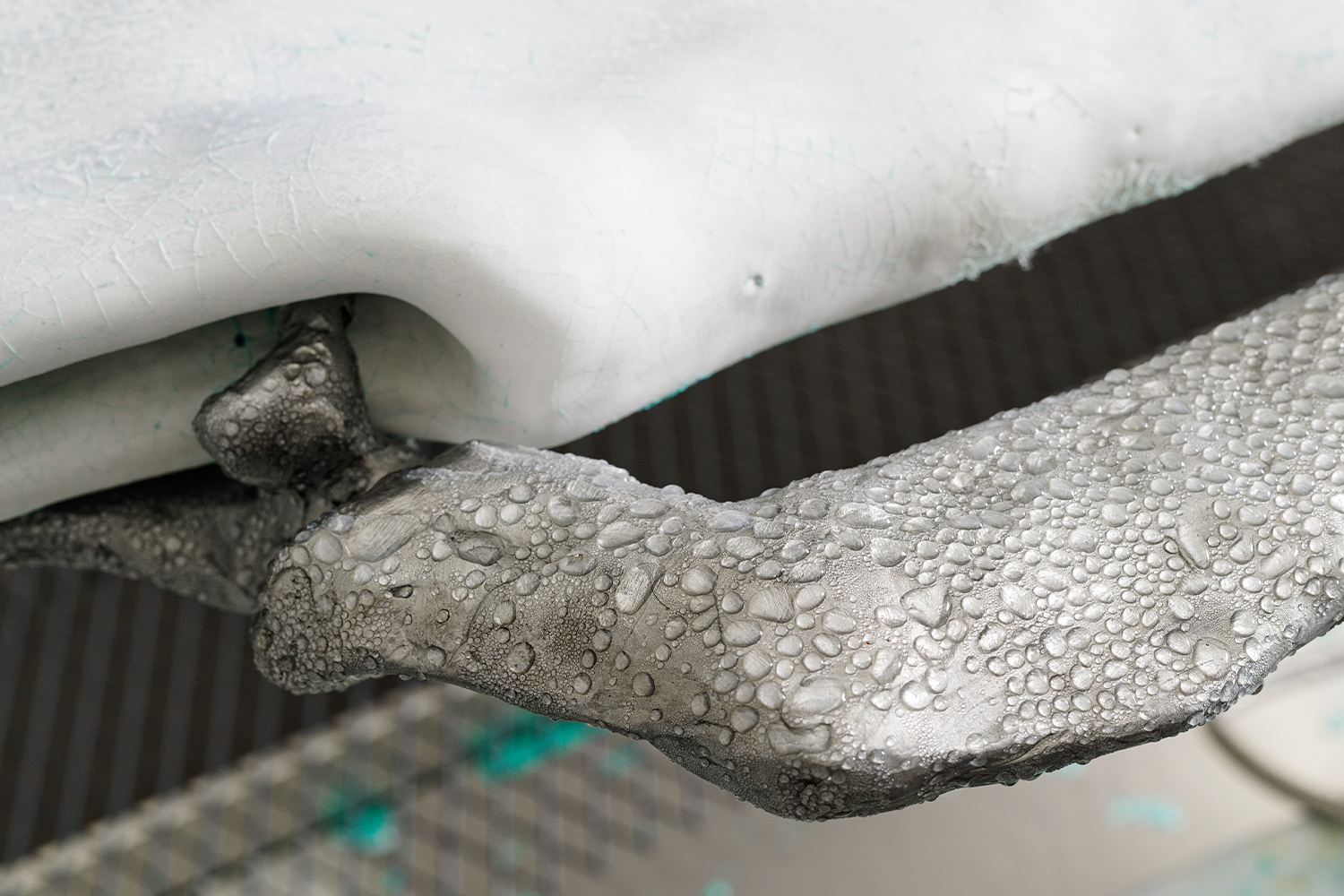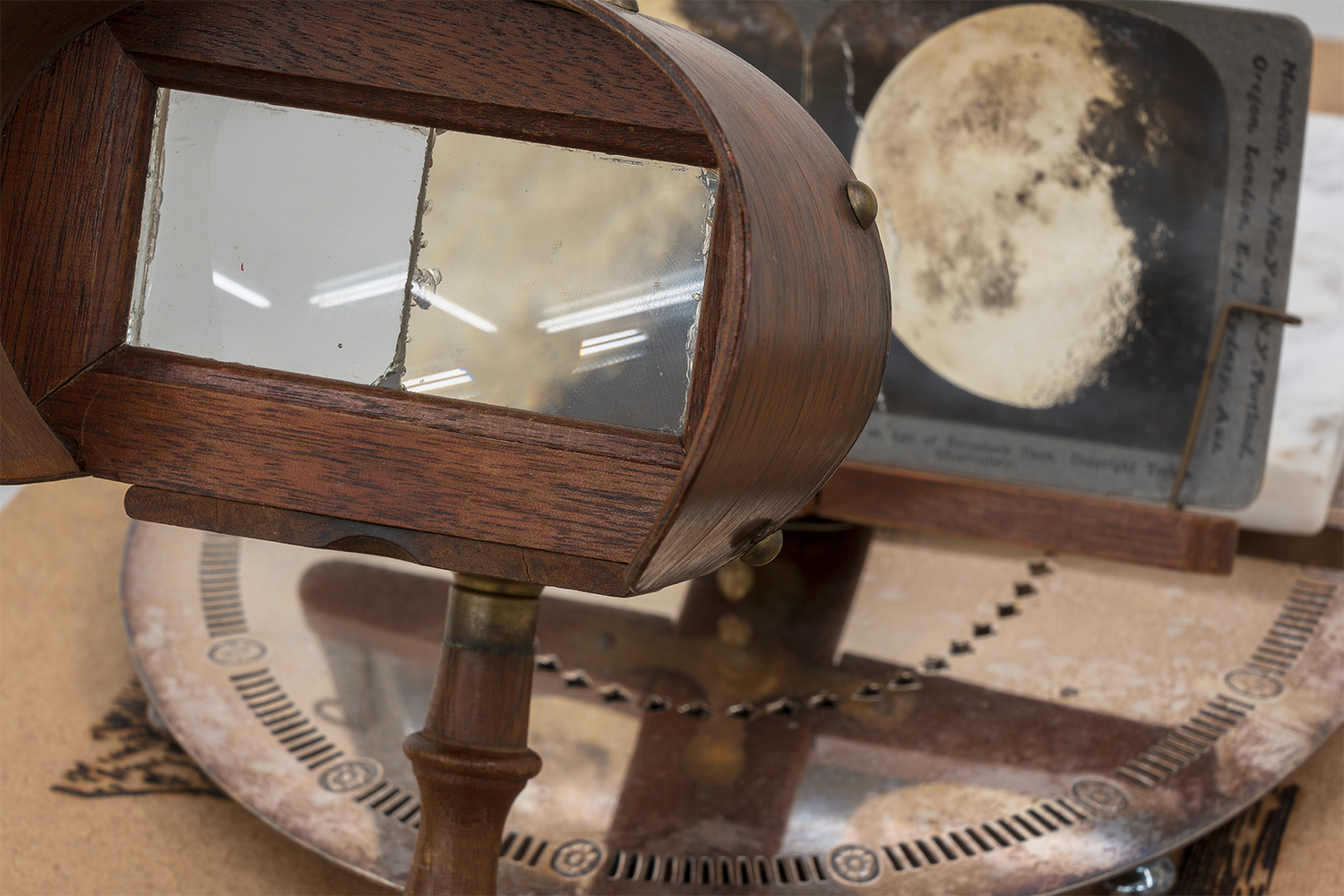Metal artifacts are arranged neatly against the walls: the spectator is surrounded. From this description, you’d be forgiven for thinking the exhibition “They Saw their House Turn Into Fields” might have a threatening aspect, but it doesn’t. The large metal artworks fence the room in, but the visitor can move freely around it. They cannot skirt the protrusions, but they can intrude upon the space within. The works are attached to the walls with colored straps (and the occasional disguised support), generating a sense of precarious stability, of a mechanical, arduous containment. This is deceptive: they are immobile.
June Crespo’s exhibition at Museo CA2M moves in this hybrid territory, full of semblances and the juxtaposition of opposites. The exhibition is made up of works cast in steel and aluminum whose forms — some of which are plant-inspired, based on the silhouette of the strelitzia reginae, known as the bird of paradise or crane flower — are blurred by the residues of the casting process (burnt additions, plaster remains from the molds, remnants from the troughs that transport the liquid metal) and the unforeseen events and alterations that occur during their production. And the way the pieces are installed alters how we perceive them: some are reminiscent of tapering fingers, others are gargoyles or winged creatures, and so on, in a sort of Rorschach test.
“They Saw their House Turn Into Fields” is an exhibition of an enormous plastic richness. By altering the “natural” casting process, Crespo achieves an aesthetic that is at once aggressive and delicate. The first of these qualities stems from the force and scale of the pieces, and the use of materials traditionally associated with solidity and durability (something that has been replicated in Basque art almost to the point of cliché), but also from the succession of ferocious protuberances and edges on their surfaces that proclaim “look — but don’t touch.”
Yet, delicacy springs from the arrangement of the works in such a way that all this gravitas verges on the point of vanishing, either because of the fragile balance in which the pieces seem to be held or because of the vulnerability that the material reveals in its imperfections, wounds, and cavities. In addition, Crespo uses pleated cloth — whose colors reference the tones of the bird of paradise flower — to cover some of the pieces, confronting the stability of forged metal with the inherent malleability of fabric.
The exhibition is completed with round cavities in the wall. They are at navel height, so you have to engage in a little contortion and stoop to see them. Inside are cochlear shapes reminiscent of the ear canal. They feel anecdotal in relation to the rest of the works, although not as much as the mural at the entrance to the room, a digital print depicting a textile stapled to the wall: placed in a transitional area, it is entirely superfluous.
Although in this review we have focused on the visual dimension of “They Saw their House Turn Into Fields,” the text that introduces the exhibition, from Marc Navarro, the display’s curator, employs an orthopedic, arid prose to furnish us with a set of over-intellectualized explanations that can only confuse — if not entirely put off — visitors. Even so, Crespo’s exhibition brings together a collection of very attractive works in which the artist displays a mature phase in her sculptural language, making use of the unforeseen sensualities of rough and sharp forms and the amalgamation of very diverse materials that end up improbably assembled to form a kind of visual reef. The wall installation is surely nothing new, however pompously it is described in the blurb: in order to hang the pieces, you need somewhere to screw them — even at the risk of leaving the room a tad sparse.

